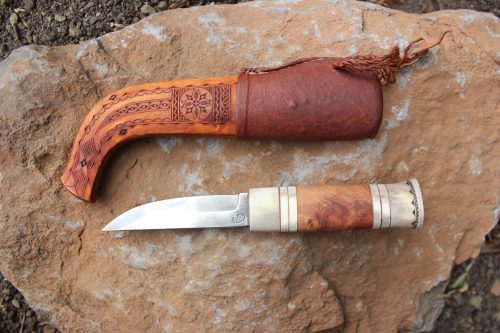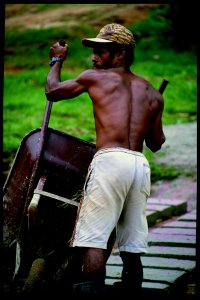Is Just Showing Up Enough?
Posture in Old Lithuania
Harvesting rye with scythes in early twentieth-century Lithuania. Original photograph Balys Buročas, 1923.
The Gokhale Method has improved my understanding of how posture correlates to our health and physicality. The method is based on healthy body architecture and has been informed by movement patterns from populations without back pain, those shared by our ancestors worldwide. This inspired me to take a look at my own forefathers in Lithuania, especially their posture while laboring in the fields.
Memories of my youth
I was born and raised in urban Soviet Lithuania. Yet, we had a little plot of land outside the city in “kolektyviniai sodai” (collective gardens) and most of our weekends and
When Is It Good to Pull Back Your Shoulders?
This is the second post in our series on shoulder positioning. Read Part 1 here!
Typing with shoulders too far forward.
Often, in industrialized cultures, the shoulders are slumped or held forward. There are so many daily tasks in the modern world that make it all too easy for these bad habits to set in: holding our arms out front for hours with poor shoulder placement while we are typing, gaming, driving, and so on. Over the years this is likely to cause various problems:
Impingement, bursitis, wear-and-tear
Reduced circulation to the arms
Compromised breathing patterns
Reduced athletic performance, increased injuries
Hunched upper back and forward head
Common pitfalls in getting the shoulders
How to Sit on the Floor, Part 3: Sitting with Legs Outstretched
This is the third post in our multi-part series on floor-sitting. Read Part 1 on floor sitting and Part 2 on squatting!
It’s very common for women in Africa to sit with their legs outstretched. I’ve seen rows of women use this position to spin yarn, engage in idle chatter, sort items, and more. I’ve seen babies massaged by women using this position both in Burkina Faso and in the U.S. by a visiting Indian masseuse who does traditional baby massage in Surat, India. In Samiland I saw this position used to bake bread in a lavoo (a Sami structure very similar to a teepee).
The Sami, who I visited in July 2015 (see my post Sleeping on Birch Branches in Samiland), bake with outstretched legs in
Grateful for My Garden
When I first came to this country in 1975, I had gardening on my mind. My family in India had just moved from Mumbai to Pune, where it became possible to plant a garden, and my mother was full of plans for this new adventure. Her excitement was infectious and I also became keen on gardening. As an exchange student, I started a garden in my host family’s plot. Later, when my husband and I moved to Stanford, I cultivated a communal plot at Escondido Village. In our first condominium/home, I spent several years working the very clay soil that is the legacy of every Bay Area homeowner. My efforts came to a standstill when I herniated my L5-S1 disc in the ninth month of my first pregnancy. Not



